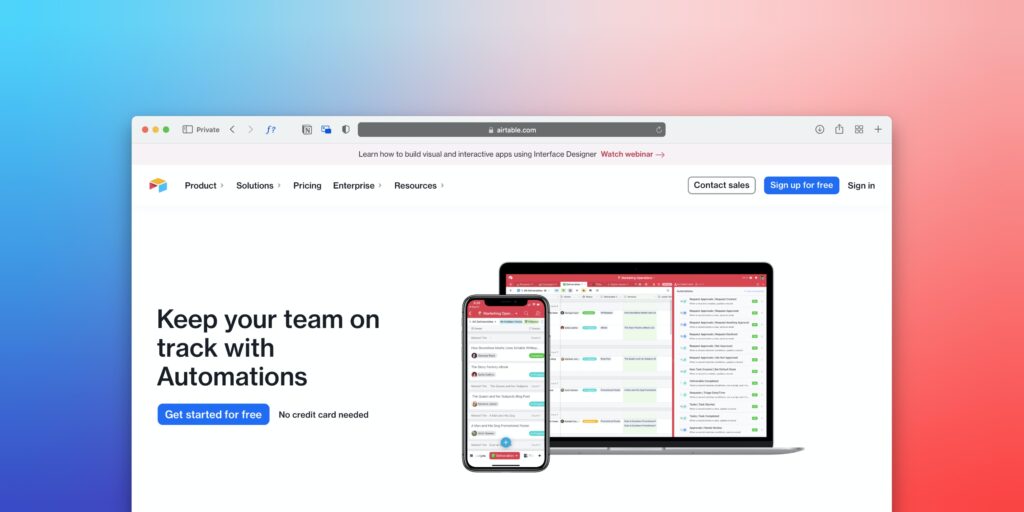Imagine navigating the complex world of business regulations with ease and efficiency. Welcome to the realm of Compliance Automation, your trusted route to achieving this. By harnessing the power of technology, including AI, compliance automation helps businesses meet stringent laws and regulatory requirements flawlessly. Whether it’s HIPAA, FERPA, GDPR, or any other regulation, this dynamic tool meticulously monitors your systems, replaces manual procedures, centralizes compliance operations, and even reduces the risk of non-compliance fines. Its arsenal includes features like categorizing and protecting specific data based on regulations, analyzing data, generating alerts for potential violations, and offering several other benefits leading to improved efficiency. If you’ve been seeking a proactive compliance strategy that overshadows reactive methods, employing compliance automation might just be your game-changing move.
Understanding Compliance Automation
Compliance automation is gaining popularity in the corporate world at an astounding pace, and for a good reason. But what exactly is it?
Definition of Compliance Automation
Compliance automation, quite simply, is the use of trending technology, including Artificial Intelligence (AI), to monitor your systems regularly for compliance. This continuous monitoring ensures that your business complies with all the critical regulations and reduces the risk of non-compliance.
Role of AI in Compliance Automation
Artificial Intelligence plays a pivotal role in driving compliance automation. The technology provides a powerful utility to map, track, and enforce compliance rules without the need for constant human intervention. AI can readily interpret regulations, significantly reducing the complexity and ambiguity often associated with compliance rules.
Replacement of Manual Procedures with Automated Systems
The real beauty of compliance automation lies in its capacity to replace laborious manual procedures. By centralizing all compliance related operations in one area, Automated systems significantly minimize the risk of human error and enhance efficiency.
Importance of Compliance in Business
Wondering why one needs to comply with certain rules? Let’s dive into the reasons.
Need for Compliance in Contemporary Business Environment
In today’s complex business environment, compliance has become more crucial than ever. Strict laws and regulatory requirements govern businesses and non-compliance could lead to potential litigation and hefty fines.
Key Regulations like HIPAA, FERPA, and GDPR
Several key regulations such as HIPAA (Health Insurance Portability and Accountability Act), FERPA (Family Educational Rights and Privacy Act), and GDPR (General Data Protection Regulation) fall within the broad umbrella of compliance. Adherence to these regulations is non-negotiable and integral to the workings of any modern enterprise.
The Cost of Non-compliance in Business
The cost of non-compliance can indeed be steep. Not only can non-compliance lead to substantial monetary penalties, but it can also tarnish a company’s reputation and credibility.

Proactive Versus Reactive Compliance Strategy
Making a choice between a proactive or reactive compliance strategy can be tricky, so here’s a brief comparison.
Definition of Proactive and Reactive Strategies
Simply put, a proactive compliance strategy is all about taking preventive measures. It’s about putting systems into place to avoid compliance issues right at the onset. On the contrary, a reactive strategy involves responding to problems as and when they arise.
Basis for Advocacy for Proactive Compliance Strategy
Most industry experts advocate for a proactive compliance strategy, and rightfully so. A proactive approach helps uncover potential risks early, thereby allowing timely corrective measures.
Risk Mitigation in Proactive Compliance
Proactive compliance seeks to mitigate risks rather than manage the fallout. This means ever being at the ready to adjust, tailor, and recalibrate your strategies and operations in anticipation of potential compliance breaches.
Elements of Effective Compliance Programs
To oversee compliance efficiently, businesses need well-planned programs.
Pre-implementation Testing
An effective compliance program should always begin with pre-implementation testing. This helps evaluate if the compliance automation software or toolset is the right fit for the specific needs of your organization.
Formulation of Clear Policies and Procedures
Policies and procedures function as the backbone of any compliance program. Well-defined guidelines can ensure that all employees understand what’s expected and how to adhere to various regulations.
Using Compliance Automation Software and Tools
Utilizing compliance automation software and tools is beneficial in processing large volumes of data swiftly. This can make the monitoring process more effective and timely, thereby reducing the risk of non-compliance.
Continuous Review of Compliance Processes
An effective compliance program is never static. It requires a continuous review of compliance processes to ensure they remain relevant and effective amidst rapidly changing regulations.

How Compliance Automation Works
Now that you know the importance of compliance automation, let’s understand how it works.
Categorization and Protection of Data
The first step in compliance automation is to categorize and protect specific data and systems based on the regulations they fall under. This ensures the right data is shielded and safeguarded from potential threats.
Collection, Control and Analysis of Data
Next, automated compliance tools collect, regulate, and analyze data. These processed data then provide insights into your compliance posture, helping you identify areas of vulnerability and risk.
Generation of Alerts for Potential Compliance Violations
The compliance automation process involves generating alerts for potential compliance violations. These alerts bring attention to possible issues before they become major problems, allowing for timely intervention and remedial action.
Benefits of Compliance Automation
Embracing compliance automation can provide a host of benefits.
Reduced Compliance Risks
Compliance automation can significantly reduce compliance risks by keeping a constant eye on your systems and alerting you to any potential risks.
Elimination of Human Error
By automating the compliance processes, the likelihood of human error, which could inadvertently lead to non-compliance, is essentially eliminated.
Constant System Vulnerability Monitoring
An automated system constantly monitors for potential system vulnerabilities, ensuring compliance throughout all operations and interactions.
Increased Efficiency
Compliance automation also boosts efficiency by simplifying and speeding up complex processes, freeing up employees to focus on more critical tasks.

Economic Implications of Compliance Automation
While the benefits of compliance automation are profound, the economic implications should not be overlooked.
Saving Money by Reducing Non-compliance Fines
Compliance automation can save organizations substantial amounts by mitigating the risk of non-compliance fines. By ensuring adherence to all necessary regulations, businesses can avoid penalties.
Cost-effectiveness of Compliance Automation Tools
The investment in compliance automation tools can be cost-effective in the long run. Given the speed and efficiency of automated systems, businesses can focus on critical operations and reduce personnel costs related to manual compliance.
Impact on Operational Costs
Operational costs can also be significantly reduced with the successful implementation of compliance automation strategies. Operations that were once time-consuming and labor-intensive can now be executed rapidly and effortlessly, contributing to lowers costs over time.
Real-Life Applications of Compliance Automation
Compliance automation has found several real-life applications, cutting across different industries.
Use Cases in Different Industries
Compliance automation can be employed in a vast range of industries, including healthcare, education, and finance. The speed, accuracy, and efficiency of AI-powered compliance automation make it an indispensable tool, regardless of the industry.
Role of Compliance Automation in Large Enterprises
Large enterprises with numerous compliance requirements can significantly benefit from compliance automation. Given the huge volumes of data and complex regulatory landscapes they operate in, automated systems make compliance manageable and less prone to error.
Importance in Small and Medium-sized Businesses
Compliance automation is not just for large enterprises. Small and medium-sized businesses can also leverage the benefits of automated compliance systems. Being compliant can become a unique selling proposition and a differentiator in this highly competitive market.
Future of Compliance Automation
With the advent of new technologies, the future of compliance automation looks promising.
Rising Trends in Compliance Automation
Compliance automation is evolving rapidly, with several exciting new trends on the horizon. The integration of AI and machine learning, predictive analytics, and real-time reporting are some key trends shaping the future of compliance automation.
Influence of Technological Advancements
Technological advancements are making compliance automation even more robust and effective. Advanced algorithms can now recognize patterns, learn, and even predict potential compliance issues, making the systems smarter than ever.
Projected Adoption Rate Among Businesses
Given the benefits and the increasing awareness of the importance of compliance, the projection of compliance automation’s adoption rate among businesses is high. As businesses strive to navigate complex compliance environments, automating these processes will become essential.
Challenges in Implementing Compliance Automation
Like every technological evolution, implementing compliance automation has its set of challenges.
Identifying the Right Automation Tools
Choosing the right compliance automation tools that align with your business operations and goals can be challenging. Extensive research, testing, and comparison among available tools are necessary to make an informed choice.
Integration with Existing Systems
Integration of compliance automation tools with existing systems can pose difficulties. It’s important to ensure newly implemented tools mesh seamlessly with your current systems to avoid disruptions.
Cost factor and Budgeting
The cost factor cannot be overlooked. Compliance automation tools usually come with a significant price tag, and budgeting for this needs careful planning.
Need for Training and Skill Acquisition
Lastly, implementing new automated systems requires that your staff has the necessary skills to operate it. This could involve extensive training or hiring new staff with the required expertise. This demand often highlights the need for training and skill acquisition, which can be time-consuming and costly. However, once your team is proficient, the returns can far exceed the initial investment.
Compliance automation is undeniably revolutionizing the corporate world, making way for smarter, safer, and more efficient organizations. By understanding its importance, benefits, applications, and challenges, your business too can harness the endless possibilities that compliance automation holds.
